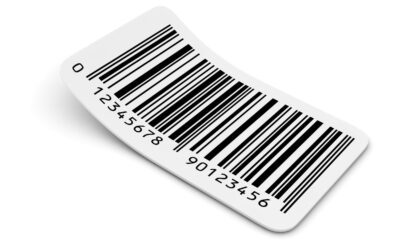An equipment tool tracking app saves you time and money. Using a system where you can log, monitor, and update relevant information improves your visibility over all of your tools and equipment, saving you time and money.
Effectively, an equipment tool tracking app is a type of asset tracking software. Your tools are your assets and they can be logged onto your system as unique, digital profiles. Then, you can add critical data to these profiles such as maintenance and usage information.
Why Should You Track Your Tools?
With no visibility over your tools and equipment, you’ll run into multiple issues. For example, you’ll lose more assets, purchase duplicates, and have expensive equipment sitting on the shelf untouched.
Tracking your tools gives you the visibility of what you own, where your assets are, and who is in charge of them. Not only does this increase your business’ accountability, but it also ensures you avoid common risks and losses.
If you know who is using a tool and where it is, you’re less likely to lose it. Then, you can add more data, such as pricing information, maintenance data, and checkout dates.
Overall, this saves you time and money as you have more visibility over what’s going on. For example, if you’re using an equipment tool tracking app as an equipment checkout system, you can pinpoint exactly when that tool is unavailable for you and your colleagues.
Logging Your Tools And Equipment
The way an equipment tool tracking app works is by logging your tools and equipment. Each of your assets will have a unique, digital profile that you can populate with data.
So, you can add the purchase cost and date, add attachments such as invoices and training manuals, monitor equipment usage through location tracking and more.
This way, not only do you have the benefit of losing fewer assets, but you also have a system that ensures you can take your equipment usage further.
An equipment tool tracking system not only gives you visibility over your equipment usage but also optimises it, allowing you to take your assets to the next level.
How To Use An Equipment Tool Tracking App
Once you’ve logged your assets onto your equipment tool tracking app you can use a wide range of features to add, remove, and edit relevant information.
So, if you’re opting for construction equipment tracking, you can track which sites tools are on and which companies are using them with ease at the simple touch of a button.
Then, you can also use asset tags to take your equipment tool tracking app to the next level. Asset tags are physical tags, likely QR codes or barcodes, that you stick onto your assets. You can then use these to scan your assets into your tool tracking system.
Once you’ve linked the physical asset to its digital profiles, every time you scan an asset’s tag, a few things happen:
- The asset’s profile opens, ready for edits and updates
- The last seen location updates, logging where your tools have bene
- The user who scanned the tag updates, giving you a clear audit trail of asset interactions
- The time of the scan updates, showing you when an issue was reported, for example
itemit’s Asset Tracking App
itemit’s asset tracking app comes is a cloud-based system that comes with an effective web portal. On your laptop, you’ll be able to run reports, perform bulk edits, and export your fixed asset register.
As the system is cloud-based, any edits you make are automatically updated across the board. This means that if you audit assets onsite, any changes you make or discover are reflected on the itemit web portal in an instant.
This system gives you a clean, quick way to track your assets, saving you a lot of time and money in the process. Then, any edits you make are also visible to your colleagues, giving you a highly scalable system.
To find out more about how itemit’s equipment tool tracking app can help your business, you can contact the team at team@itemit.com. You can also fill in the form below to start your very own 14-day free trial. Asset tracking is simple when you use itemit.
Equipment Tool Tracking App
Choose a better way to track your assets
Start your free 14-day trial now
Instant access. No credit card details required.
Related articles
Everything You Need to Know About 2D Barcodes
Discover everything about 2D barcodes, including how they work, their benefits, and how they are revolutionizing industries and improving business operations
Complete Guide to Asset Lifecycle Management and Its Benefits
Learn about asset lifecycle management and how it helps businesses optimize asset usage, reduce costs, and improve efficiency throughout the asset’s life.
Benefits of Vendor Managed Inventory for Your Business
Learn how Vendor Managed Inventory (VMI) can streamline your supply chain. Explore the key benefits and how it helps optimize inventory management.




